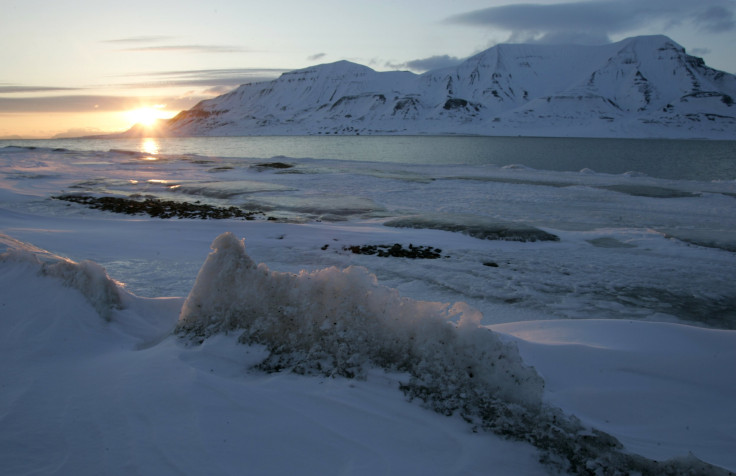Warm River Water Contributes To Arctic Sea Ice Melt: NASA

The heat from warm river water draining into the Arctic Ocean is a major contributor to the melting of Arctic sea ice each summer, according to a new study conducted by NASA.
As part of the study, published in the journal Geophysical Research Letters, researchers used satellite data to measure the surface temperature of water from a Canadian river flowing into the icy Beaufort Sea during the summer of 2012. The researchers observed that a sudden influx of warm river water into the sea rapidly warmed the surface layers of the ocean, increasing the melting of sea ice.
“River discharge is a key factor contributing to the high sensitivity of Arctic sea ice to climate change,” Son Nghiem of NASA’s Jet Propulsion Laboratory in Pasadena, Calif., said in a statement. “We found that rivers are effective conveyers of heat across immense watersheds in the Northern Hemisphere. These watersheds undergo continental warming in summertime, unleashing an enormous amount of energy into the Arctic Ocean, and enhancing sea ice melt. You don’t have this in Antarctica.”
The researchers also noted that the melting of Arctic sea ice contradicts what occurs in Antarctica, which is a frozen continent without any large rivers. According to researchers, the sea-ice cover in the Southern Ocean surrounding Antarctica has been relatively stable, while Arctic sea ice has been declining rapidly over the past 10 years.
The scientists concluded there were three major factors that lead to an increase in warm river water flow. First, the overall volume of water discharged from rivers into the Arctic Ocean has increased. Second, rivers are getting warmer as their watersheds heat up. And third, Arctic sea ice cover is becoming thinner and more fragmented, which makes it more vulnerable to rapid melting.
The scientists selected the Mackenzie River in western Canada to demonstrate the impact of river water on the Arctic sea surface, and they used satellite data to examine the extent of sea ice in the study area from 1979 to 2012 and compared it to reports of the Mackenzie River discharge.
“Within this period, we found the record largest extent of open water in the Beaufort Sea occurred in 1998, which corresponds to the year of record high discharge from the river,” Ignatius Rigor of the University of Washington in Seattle, and the study’s co-author, said in the statement.
The researchers observed that, on June 14, 2012, a stretch of landfast sea ice -- sea ice that is stuck to the coastline -- formed a barrier that held the river discharge close to its delta. After the river water broke through the ice barrier by July 5, it was found that the average surface temperature of the area of open water increased by 11.7 degrees Fahrenheit.
Based on previous data from 72 rivers in North America, Europe and Asia that flow into the Arctic Ocean, the researchers calculated that the heat from these rivers each year can be compared to all of the electric energy used by the state of California in 50 years at today’s consumption rate.
“If you have an ice cube and drop a few water droplets on it, you’re not going to see rapid melt,” said co-author Dorothy Hall of NASA’s Goddard Space Flight Center in Greenbelt, Md. “But if you pour a pitcher of warm water on the ice cube, it will appear to get smaller before your eyes. When warm river water surges onto sea ice, the ice melts rapidly.”
© Copyright IBTimes 2025. All rights reserved.






















